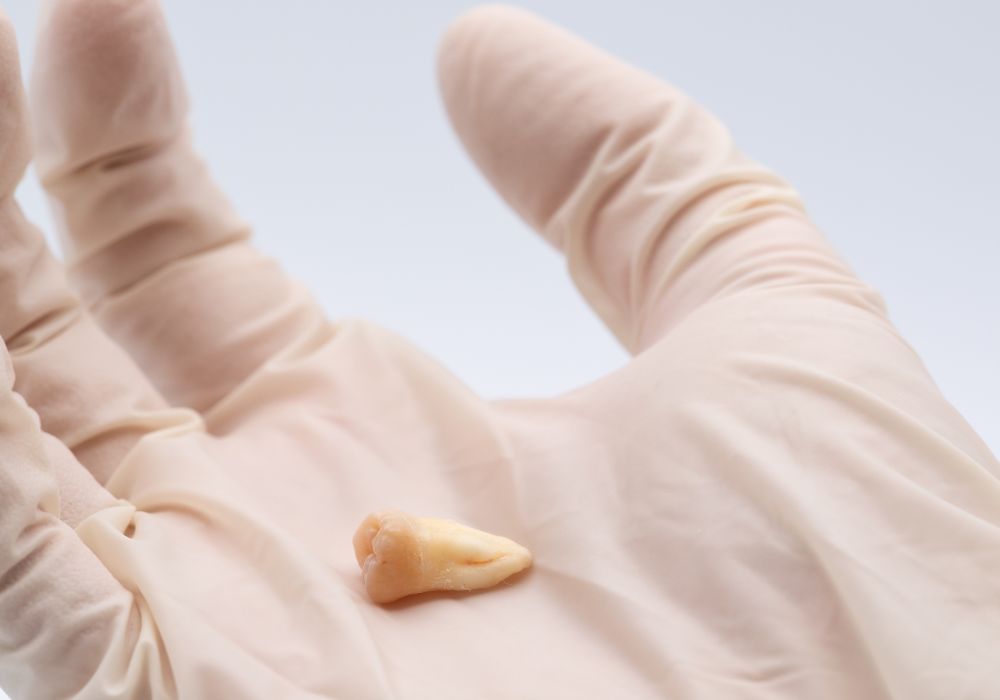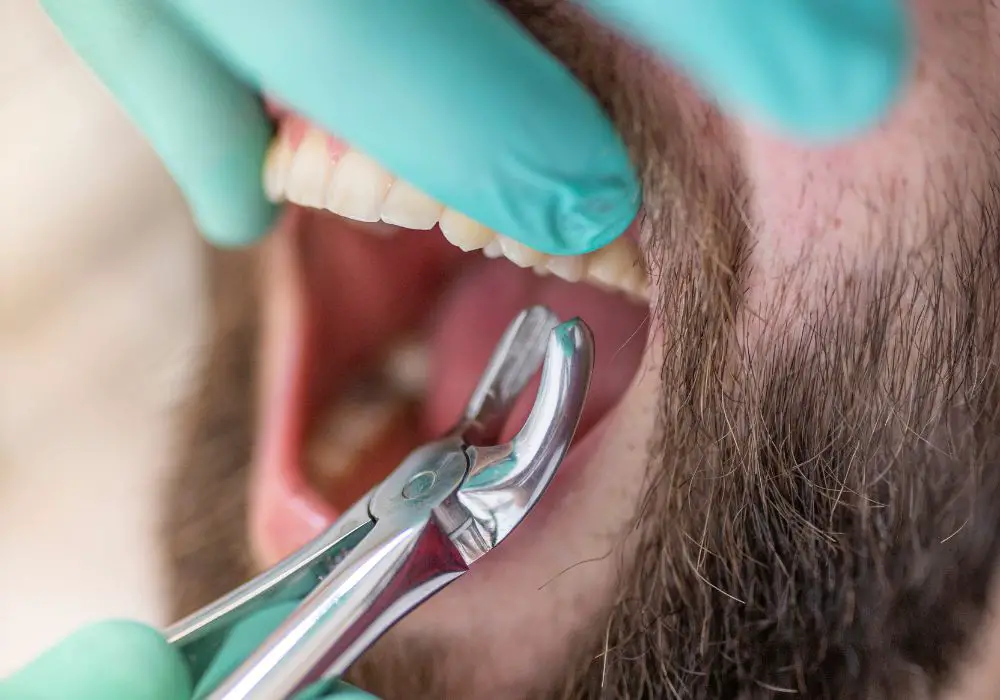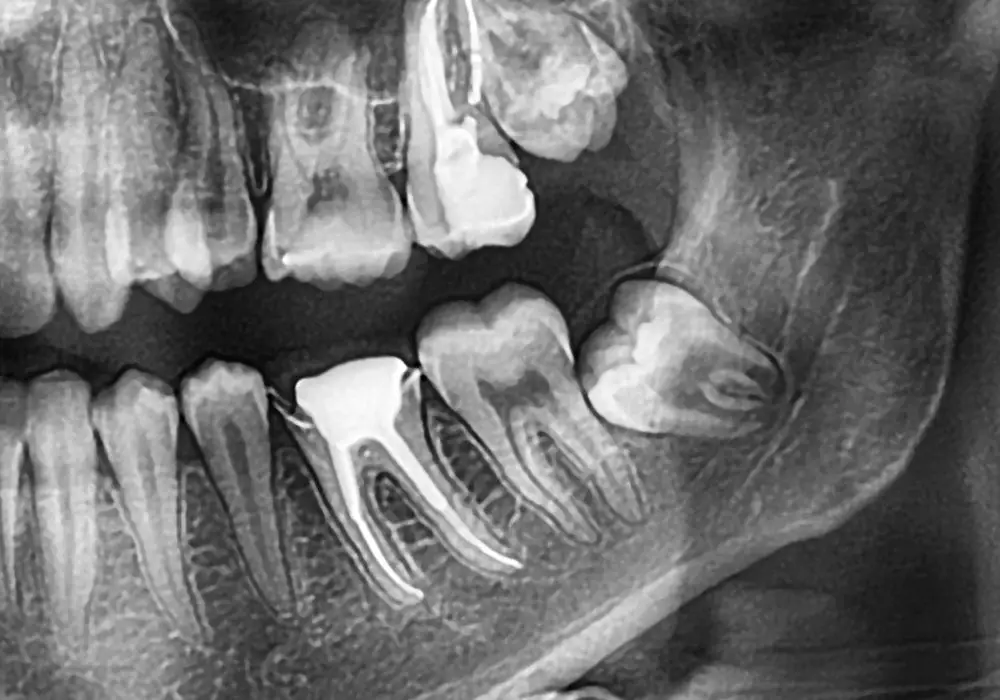Introduction
Wisdom teeth, also known as third molars, are the last set of molars to erupt in the back of the mouth. They typically emerge between the ages of 17 to 25. While many people have healthy wisdom teeth that come in normally, these teeth often cause problems and need to be removed. There are several reasons why wisdom teeth may need to be extracted:
Common Reasons for Wisdom Teeth Removal
- Impacted wisdom teeth
- Pericoronitis
- Tooth decay
- Gum disease
- Cysts or tumors
- Orthodontic reasons
- Preventive measures
Understanding why wisdom teeth cause issues and often require extraction can help you make informed decisions about your own or your family’s oral health.
Impacted Wisdom Teeth
One of the most common reasons wisdom teeth are removed is due to impaction. Impacted wisdom teeth are third molars that don’t have enough room to emerge properly from the gums. They may only partially erupt or remain trapped below the gum line.
According to the American Association of Oral and Maxillofacial Surgeons (AAOMS), impaction occurs in around 65% of young adults. The third molars become jammed against the second molars, nearby nerves, or other tissue. Attempting to emerge through the dense jawbone can also cause impaction.
There are various types of impaction that can affect wisdom teeth:
- Mesioangular impaction – Tooth is tilted forward towards the front of the mouth
- Vertical impaction – Tooth is unable to fully emerge but is upright
- Horizontal impaction – Tooth grows sideways rather than vertical
- Distoangular impaction – Tooth slants backward toward the rear of the mouth
The type of impaction influences the difficulty of extraction and potential complications. Mesioangular and horizontal impactions tend to be more challenging to remove.
Signs and Symptoms of Impacted Wisdom Teeth
Impacted wisdom teeth don’t always produce obvious symptoms initially. Some signs to watch for include:
- Pain, swelling, or irritation of the gums around the impacted tooth
- Inflammation or infection of nearby gum tissue, called pericoronitis
- Cysts or tumors that form around trapped wisdom teeth
- Crowding or shifting of other teeth
- Tooth decay in adjacent molars due to impacted wisdom teeth
- Headaches or jaw pain from wisdom teeth coming in
Extraction is usually necessary for impacted third molars to relieve symptoms and prevent further problems. The AAOMS recommends removal between ages 16 to 22 before the roots are fully formed. Impacted wisdom teeth become harder to extract later on.
Pericoronitis
Pericoronitis refers to inflammation of the gum tissue surrounding the crown portion of a partially erupted wisdom tooth. It’s most often caused by trapped food particles and bacteria under the gum flap. As the wisdom tooth tries to break through the gums, the flap can become swollen and infected.
Symptoms of pericoronitis affecting wisdom teeth include:
- Swollen gums around the wisdom tooth
- Gum pain or soreness when chewing
- Redness and inflammation of the gums
- Bad breath or unpleasant taste from the infected area
- Difficulty fully opening the mouth
- Headache when chewing or biting down
- Mild fever in severe cases
If the wisdom tooth hasn’t fully emerged, the gum flap may partly cover the area making it hard to see the infection. Still, you may notice a swollen bump and sensitivity when biting down.
Pericoronitis flareups are common when wisdom teeth are partially impacted. Severe or recurring cases often warrant extraction to remove the problematic wisdom tooth.
Tooth Decay
Tooth decay is a common problem with wisdom teeth. The third molars are difficult to see and reach in the back of the mouth. This makes it hard to clean them effectively. Food and plaque easily get trapped around wisdom teeth, raising the risk of cavities.
Without proper oral hygiene, the pits and grooves of wisdom teeth are prone to decay. Additionally, impacted wisdom teeth can lead to cavities in the second molars ahead of them. As they try to emerge, wisdom teeth can damage adjacent teeth. Tooth decay is very painful and damaged wisdom teeth usually require extraction.
Signs your wisdom teeth have tooth decay include:
- Pain or sensitivity to hot and cold in the back teeth
- Achy discomfort while chewing
- Visible holes or dark spots on wisdom teeth
- White, chalky enamel indicating decay
- Bad breath originating from the back of the mouth
Routine dental x-rays can detect wisdom tooth decay in early stages before major destruction occurs. Your dentist will check for any signs of cavities.
Gum Disease

Gum or periodontal disease also affects wisdom teeth. Signs include:
- Red, swollen, tender gums
- Bleeding when brushing or flossing back teeth
- Bad breath or metallic taste from bacteria
- Receding gums around wisdom teeth
- Food packing between teeth and gums
- Loose wisdom teeth
The early stage called gingivitis involves inflammation without serious tissue damage. More advanced periodontitis destroys the gums and bone around teeth. Partially erupted wisdom teeth provide areas for bacteria to accumulate and infect the gums. Wisdom teeth extractions help treat and prevent gum disease from progressing. Removing them eliminates hard to reach surfaces vulnerable to plaque buildup.
Cysts and Tumors
Noncancerous cysts or tumors occasionally form around impacted wisdom teeth. These fluid-filled sacs put pressure on nerves, muscles, and other tissue. This can be very painful if left untreated.
Common types of cysts associated with wisdom teeth include:
- Dentigerous cyst – develop around the crown of an impacted wisdom tooth
- Keratocyst – form in the jaws, often near impacted wisdom teeth
- Calcifying cyst – emerge from tissue around the roots of teeth
Larger cysts may cause:
- Jaw pain or soreness
- Swelling in the cheeks or gums
- Difficulty opening the mouth fully
- Loosening of the teeth
- Tooth displacement or misalignment
Minor cysts may be monitored at first. However, if a cyst continues to grow or becomes symptomatic, the impacted wisdom tooth requires removal.
Orthodontic Reasons
Wisdom teeth extractions may be necessary for certain orthodontic treatments including:
- Braces – To create adequate room for straightening other teeth. Wisdom teeth removal prevents crowding or changes to the bite after braces.
- Invisalign® aligners – Aligners won’t work properly if wisdom teeth cause crowding. Extractions help improve the fit and function of the aligners.
- Jaw surgery – Orthognathic surgery to correct jaw abnormalities requires pre-removal of wisdom teeth. This allows proper positioning of the jaws after surgery.
The orthodontist will evaluate if enough space exists for wisdom teeth to come in properly. Panoramic x-rays and dental models help determine whether extraction is needed. If inadequate room exists, they’ll likely recommend extracting wisdom teeth sometime between ages 13 to 18.
Preventive Measures

Many dentists advise wisdom tooth extraction as a precautionary measure. They recommend removal to prevent potential problems if the teeth become impacted or diseased later on.
Elective extraction may be suggested if:
- X-rays show wisdom teeth are poorly positioned or unlikely to fully emerge
- There are early signs wisdom teeth may not erupt properly
- You’ve had past issues with impacted teeth
- You wish to avoid extraction complications as an adult
While evidence on preventive wisdom tooth extraction is mixed, removing them early may help some avoid problems in the future. Talk to your dentist about the risks and benefits.
The Extraction Procedure
Extracting wisdom teeth is a common outpatient surgery performed by oral surgeons. They will examine the teeth, take x-rays, and discuss anesthesia options. Here are the general steps of the extraction process:
- Examination – The surgeon will evaluate the position of wisdom teeth on x-rays and inspect them clinically. This allows planning the best surgical approach.
- Anesthesia – General anesthesia administered intravenously or local anesthetic injections are used to numb the area.
- Incision – After numbing, a small incision is made in the gum tissue overlying the impacted tooth.
- Bone removal – For teeth embedded in bone, the surgeon will remove bone tissue with a drill or scaler to access the tooth.
- Tooth extraction – The tooth is detached from the socket and bone with tools like elevators and forceps. Sometimes teeth are sectioned if needed.
- Socket irrigation – The socket is rinsed to remove debris. Stitches and gauze help control bleeding.
- Stitches – The gums are closed up with stitches that gradually dissolve over 1-2 weeks.
After surgery, you’ll need to keep gauze on the extraction site to control bleeding. Recovery takes about 1-2 weeks as detailed below.
Wisdom Tooth Removal Recovery
Proper aftercare helps minimize pain, swelling, and other discomfort after wisdom teeth extraction. Typical recovery recommendations include:
- Using cold compresses on the cheeks for 24 hours after surgery to reduce swelling.
- Avoiding spitting, sucking through a straw, or disrupting the blood clot for 24 hours.
- Sticking to soft foods like yogurt, applesauce, soup broth for the first 3-4 days.
- Taking prescribed pain medications around the clock for the first few days as needed.
- Rinsing very gently with saltwater after 24 hours to keep the area clean.
- Avoiding strenuous activity, smoking, or drinking through a straw for 5-7 days.
- Calling your oral surgeon if you have excessive bleeding, fever, pus, or worsening pain.
Most pain, swelling, and other discomfort improves within the first week after extraction. Complete healing takes 4-6 weeks for the sockets to fill in with bone and tissue.
Wisdom Teeth Removal Risks

While usually safe when done properly, wisdom tooth extraction carries some risks including:
- Dry socket – Blood clot dislodges leaving the bone exposed and very painful.
- Nerve injury – Lingering numbness of the lip, chin, or tongue if wisdom teeth are near nerves.
- Infection – Prevented by keeping the mouth clean and using antibiotics if needed.
- Sinus problems – If upper wisdom teeth extend near the maxillary sinuses.
- Reaction to anesthesia – Nausea, vomiting, allergic reactions, or dizziness.
- Bleeding – Can usually be controlled with gauze, stitches, and proper care after surgery.
Discuss any specific concerns with your oral surgeon prior to extraction. Serious complications are uncommon when surgery is performed by an experienced professional.
Frequently Asked Questions
Here are answers to some common questions about wisdom teeth extractions:
How long does wisdom tooth removal recovery take?
Initial healing takes 1-2 weeks. Swelling, pain, and other discomfort improves gradually during this time. Complete healing can take up to 2 months for the extraction sites to fill in with bone.
Do wisdom teeth really need to be removed?
Not always. Wisdom teeth that fully emerge and remain functional may not necessarily require extraction. However, removal is often advised to prevent future problems.
How painful is wisdom tooth extraction?
Most patients experience moderate pain and swelling for a few days after surgery. Prescription pain medication and ice packs can help manage discomfort. Severe throbbing pain that gets worse may indicate complications.
Can extracting wisdom teeth cause teeth shifting?
Neighbor teeth don’t usually shift after wisdom tooth removal as long as you don’t have existing crowding issues. The extraction site fills with bone over time, preventing movement of other teeth.
What is the cost to remove wisdom teeth without insurance?
Costs vary depending on the oral surgeon and location. Estimates range from $75 – $200 per tooth or $300 – $800 to extract all four. Some offer more affordable rates for patients without dental insurance.
Conclusion
Problems like impaction, decay, cysts, and gum disease make wisdom tooth extraction often necessary. Removal surgery is done under anesthesia by an oral surgeon who extracts the tooth and stitches closed the gums. Recovery takes around 1-2 weeks.
While extracting wisdom teeth poses some risks like nerve injury and dry socket, serious complications are uncommon with an experienced surgeon. Discuss your specific situation to determine if removing your third molars is appropriate.






